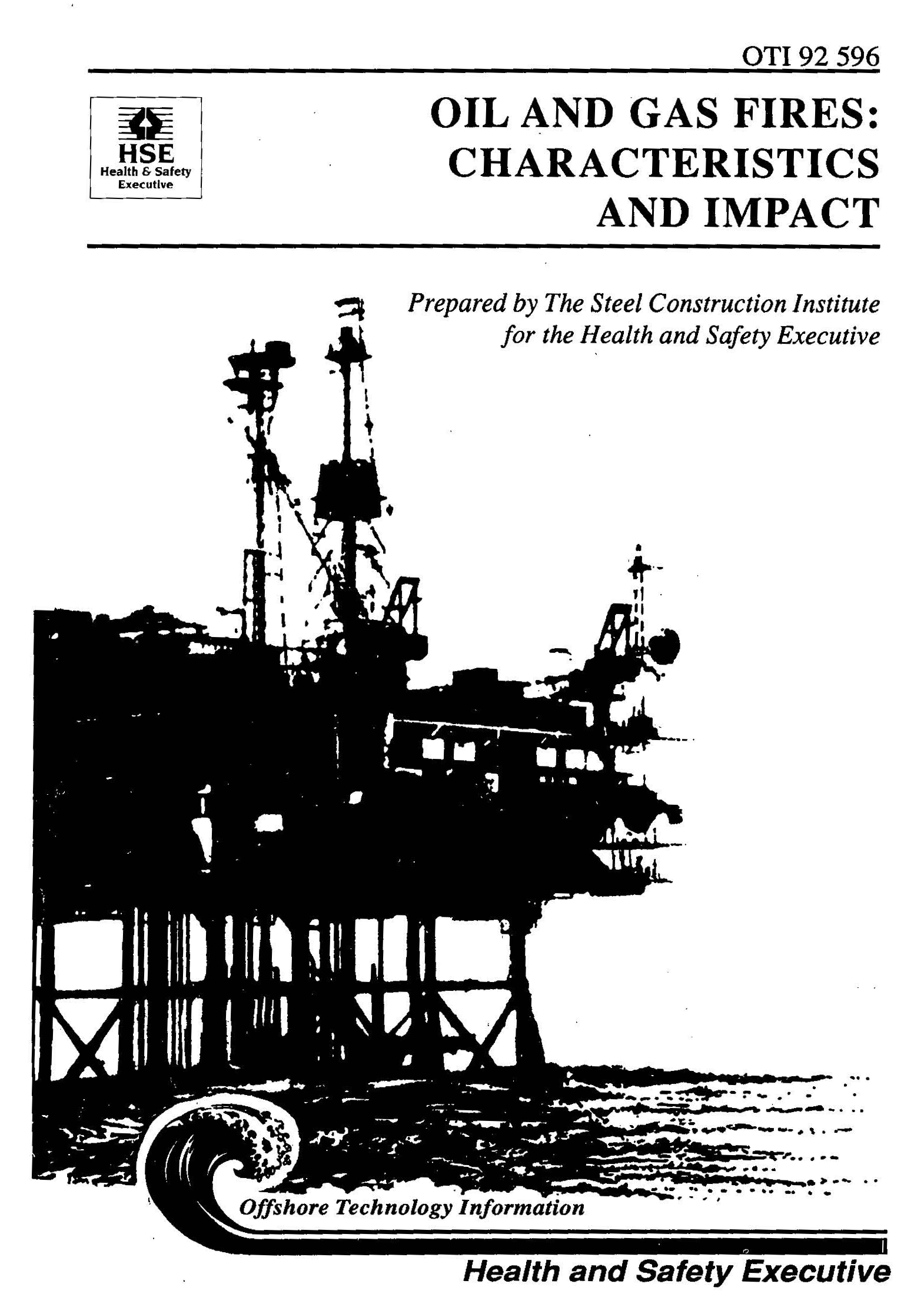HSE OTI 92 596
Oil and gas fires: characteristics and impact
Work Package FL1
BFETS Phase 1

FABIG Members: Log-in to access all FABIG resources LOG IN
SUMMARY
This report is an appraisal of:
- Current knowledge of the characteristics and consequences of large, open oil and gas hydrocarbon fires of relevance to offshore safety;
- The ability to predict fire properties for hazard assessment and fire engineering.
The report is for technical representatives of Participating Companies and use as a desk-top reference manual by staff directly involved in offshore hazard assessment and fire engineering.
The fire events identified and appraised are those regarded as being possible offshore.
Fire types and those features of particular significance offshore are introduced and the characteristics that influence the consequences of these fires are discussed.
Pool and running liquid fires, jet fires, cloud fires and fireballs are treated in the necessary level of detail. Experimental findings and theoretical approaches are appraised. The degree to which consequences can be quantitatively predicted is presented. Specific models are reviewed.
The predictive methods appraised are deterministic. Emphasis is on those that are, or soon will be, reasonably practicable to implement and for which there is a sound basis. Stochastic and probabilistic methods are not addressed, nor is risk assessment.
Comparisons are made between the predictions of some commercially available models and direct measurements on three large pool fires and four large jet fires.
General quality requirements of predictive models are stated.
Gaps in knowledge and areas of uncertainty which prevent the confident prediction of the consequences of fires are identified.
The major gap is the poor ability to predict effects of scale and fuel type and current models must therefore only be used within their range of validation. Field and integral modelling methods may offer a framework to fill the gap eventually. Presently, however, these latter methods are only research tools and are unsuitable for hazard assessment until thoroughly tested and publicly validated.
There is a considerable existing body of knowledge and ability to predict hydrocarbon fires that demands wider dissemination and use. Sound consequence prediction based on that wider use should be an integral part of safety assessment.
The full report is publicly available from the HSE Website at www.hse.gov.uk/research/otipdf/oti92596.pdf.
Online purchase options:
Non-Members of FABIG are able to purchase PDF copies of the reports.